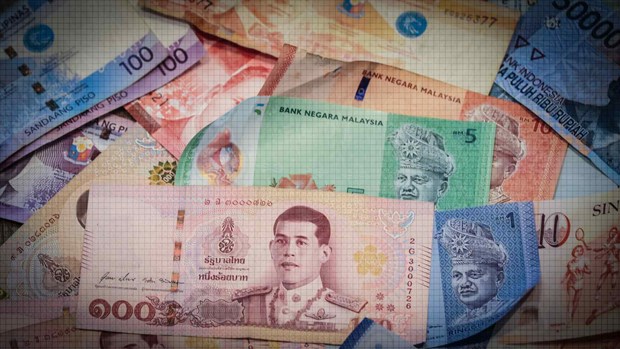Malaysian, Thai economies suffer as currencies slide
 Currencies in Southeast Asia have trended lower against the dollar in recent months due to tepid regional economic growth and interest rate gaps with the U.S (Photo: asia.nikkei.com)
Currencies in Southeast Asia have trended lower against the dollar in recent months due to tepid regional economic growth and interest rate gaps with the U.S (Photo: asia.nikkei.com)Hanoi (VNA) – Currencies of Southeast Asian countries are trading near their lows for the year against the surging USD, with the MYR of Malaysia and THB of Thailand leading the decline, as governments and businesses in the region worry about the economic impact of the depreciation., according to Nikkei Asia.
The cheaper currencies are bringing higher import costs. Regional exporters, on the other hand, are struggling to take advantage of the slide, as uncertainties prevail in big markets, especially China.
While a weaker currency generally benefits exporters and tourism, a sustained fall risks triggering capital outflows. The recent uptick in oil prices has also raised fears of faster inflation.
Nikkei Asia quoted market strategist at Saxo Markets in Singapore Charu Chanana’ saying as a combination of a higher dollar, a weaker Chinese economy and higher oil prices have become a dangerous cocktail for most of the ASEAN economies.
The MYR and the THB are the worst performers in Southeast Asia this year against the USD falling 6.9% and 4.4%, respectively, through October 13. The VND of Vietnam is down 3.4%, while IDR of Indonesia and SGD of Singapore have held up relatively well against the greenback, slipping 2.1% and 0.7%, respectively.
The broad depreciation comes on the back of strong US economic and wage growth that has pushed Treasury yields and the dollar higher. The resilient US economy has led some investors to conclude the Federal Reserve will keep interest rates higher for longer to fight inflation.
Higher interest rates in the US attract investors seeking better returns, encouraging capital outflows from Southeast Asia and weakening regional currencies. In particular, the MYR hit a 10-month low of 4.729 against the dollar on October 4./.











